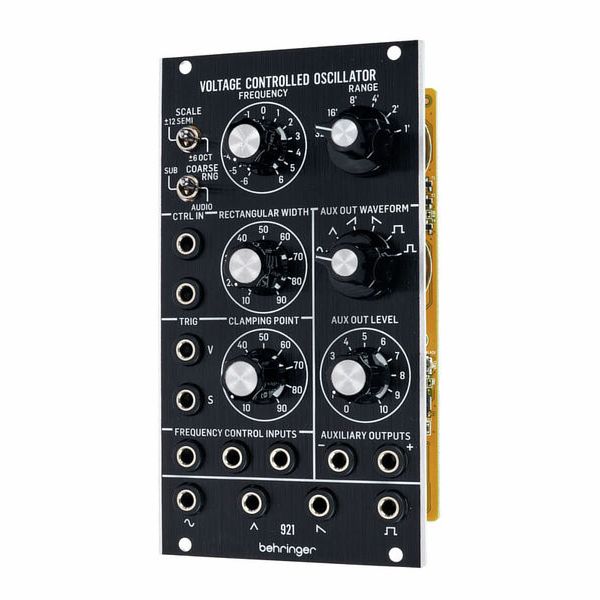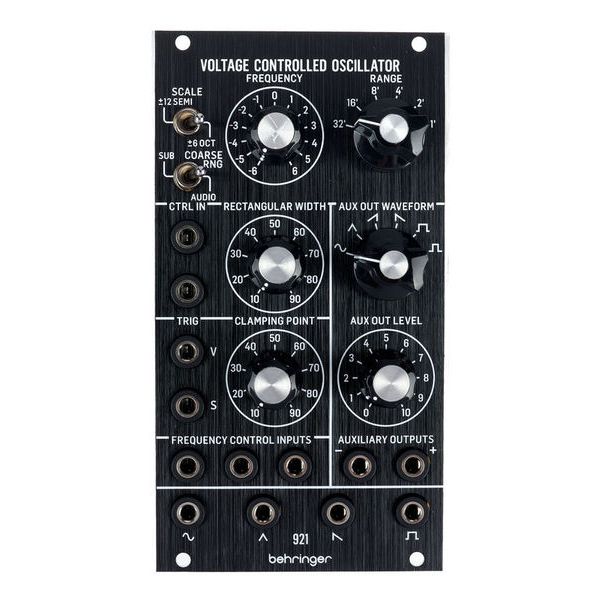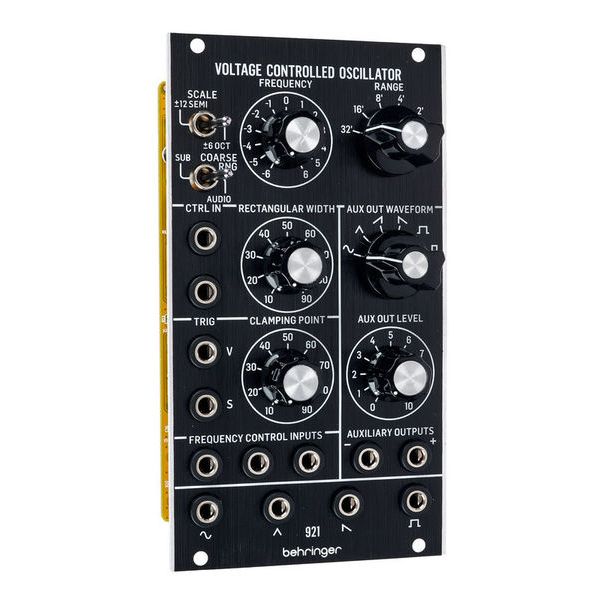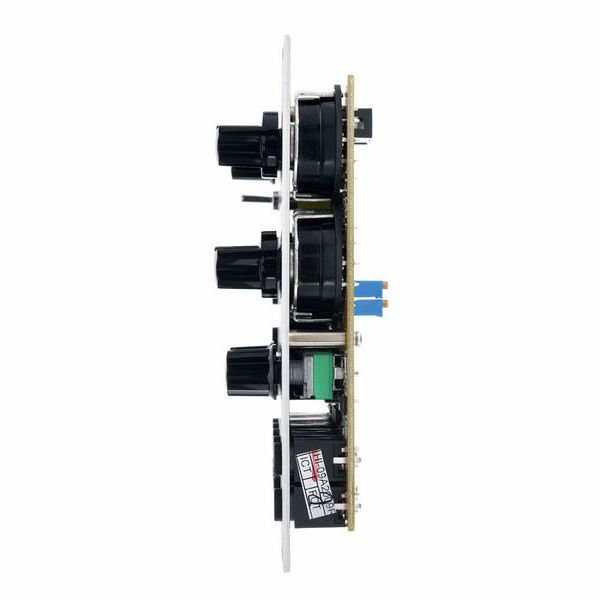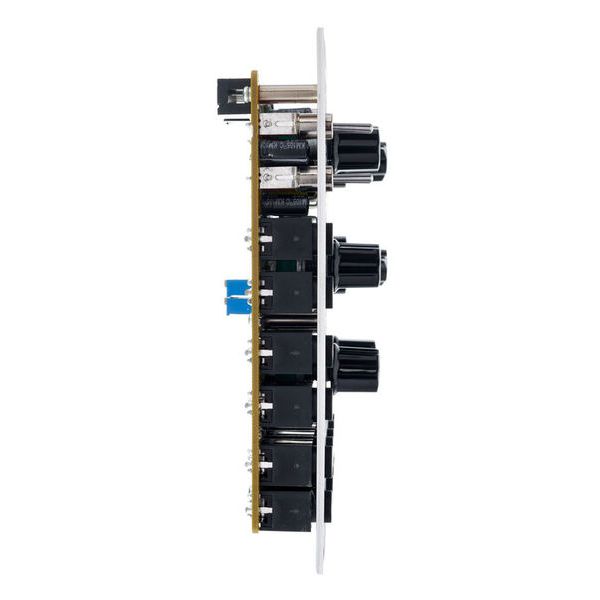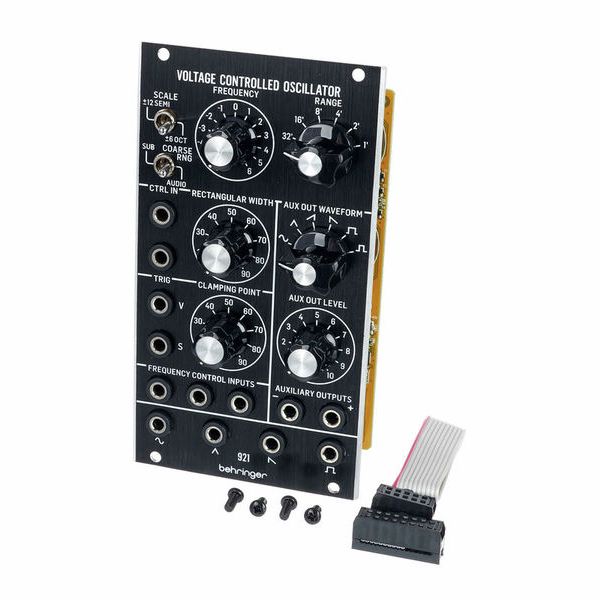The Behringer 921 VC Oscillator is an accurate clone of the original Moog unit. Having used this module extensively, we've realized that it makes the most sense if used with the other Moog components. If you plug it into a typical Eurorack system, several things will probably confuse you at first.
- The switchable output comes with a switchable wave shape and a large volume knob, but also with an inverted output. This suggests that you are supposed to use it as an LFO, and use the inverted output to get saw and ramp. It will track with semitones, but it works a lot better in wide mode, where you can go to very slow up into audio rate, and can be used as modulation for very cosmic tones.
- The four waveform outputs along the bottom are much quieter than typical Eurorack level, but can be mixed together with the CP4 mixer (which also saturates). On the similar Moog 901 VCO, these outputs also had individual attenuation.
- Like the original Moog, the oscillator is tuned to F. The user should be ready to calibrate the tuning via trim pots on the back (see instructions in the manual, which is also online if it's not in the box)
- The oscillator tracks over a 5 octave range. Some of the waveforms like the sinus and triangle will lose their character at audio rate if you go too low. Also, the oscillator stops tracking pitch at 0 V, i.e. there is a minimum pitch when using this with CV.
- Pulse width ("rectangular width" here) only goes from 15% to 85% via the knob, but the full range of 0% .. 100% can be had using CV.
- "Clamping Point" is normally called Sync.
To better understand how the Moog modular is supposed to work, look up Daniel Fisher's Moog Model 10 videos. Also helpful is the AM Synths webpage about this module, which goes into much greater detail about this module's technical characteristics, voltages, et cetera!


